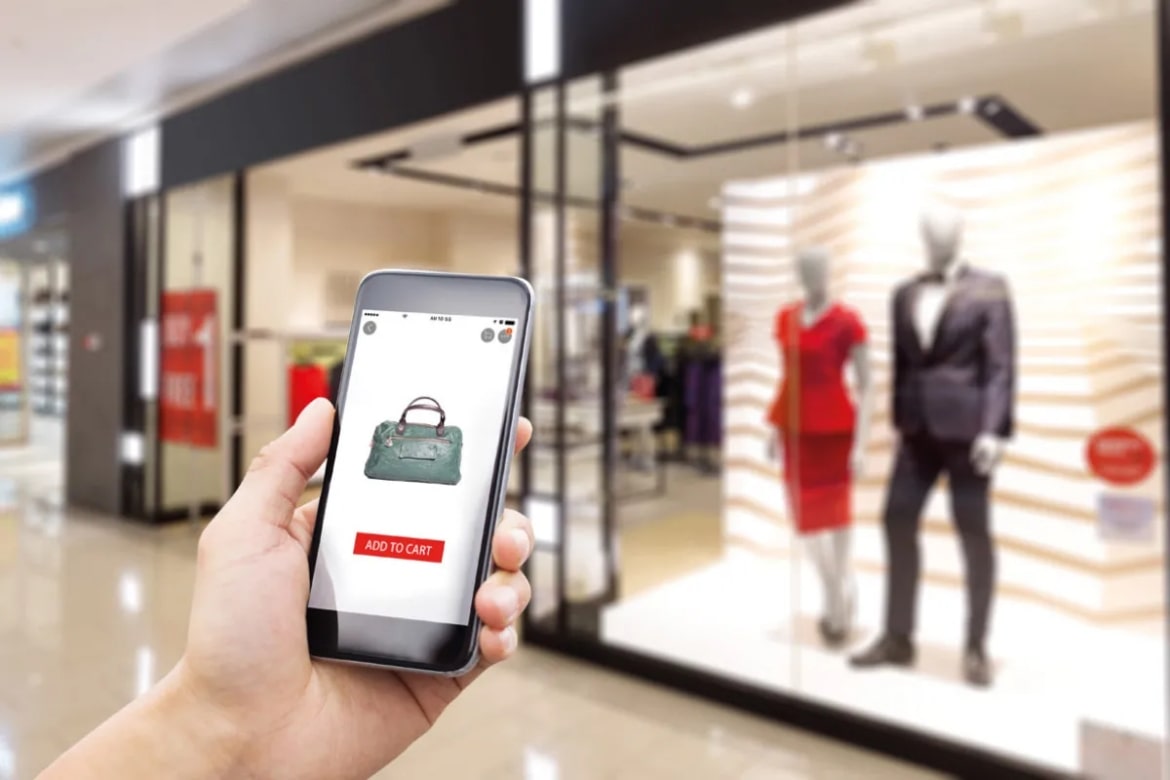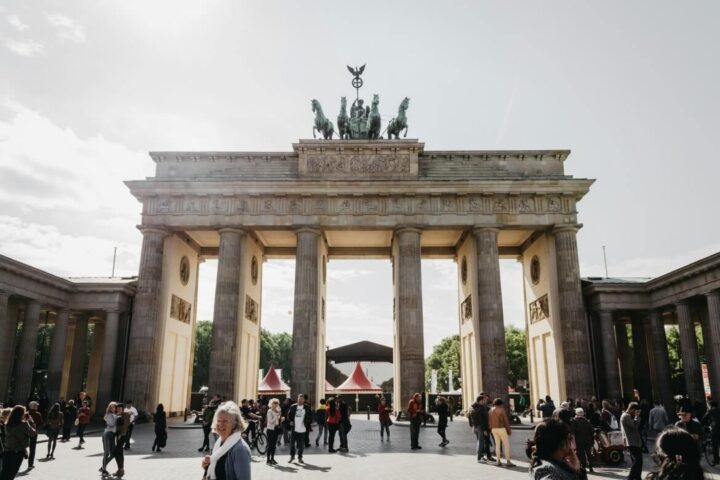Top fashion apps in Germany: Zalando, About You and Otto lead the market
Written by
Editorial TeamPublished on
Discover the top fashion apps in Germany. See why Zalando, About You & Otto top the charts.

Mobile shopping has become an integral part of the fashion retail landscape in Germany. As smartphones continue to dominate consumer interaction, fashion retailers are prioritizing app experiences to capture user attention and foster loyalty. The recently published Retail Fashion App Study 2025 by Simon-Kucher & Partners offers a data-rich view into this evolving space, highlighting the top-performing apps and the features that set them apart. In this article, we delve into the findings of the study to uncover what makes the top fashion apps in Germany 2025 so successful.
(Image Source: www.simon-kucher.com)
According to the study, Zalando, About You, and Otto emerge as the top three fashion apps used by German consumers. Zalando leads with 53.7% of respondents using the app at least occasionally, followed closely by About You at 50.9% and Otto at 45.5%. MyTheresa, with 41.2%, also maintains a strong position, particularly among high-income users.
What distinguishes these fashion apps in Germany is their commitment to seamless functionality, wide-ranging assortments, and advanced personalization. Users are increasingly expecting more than just transactional platforms. They seek engaging, intelligent, and relevant experiences tailored to their preferences and behaviors.
Influence of income on app choice
App preference varies significantly across income groups. Among users with a household net income of over €7,000 per month, 44.4% use MyTheresa, 41.5% use Breuninger, and 30.9% use Hugo Boss. These platforms emphasize exclusivity, curated content, and elevated user experience.
Conversely, among those earning under €2,000 per month, 43.2% use Shein and 33.5% use C&A. These apps attract users by offering affordability, promotions, and fast-changing inventories.
Understanding this segmentation is crucial for app developers and marketers aiming to optimize their offerings. The ability to tailor both product and messaging strategy to specific income brackets can determine the success or failure of an app in this competitive landscape.
Features that drive success
User expectations for fashion apps in Germany have matured considerably. The study identifies several features that users rate as essential to a positive shopping experience:
- filterable navigation (used regularly or occasionally by 82.9%)
- product reviews and in-depth information (81.3%)
- AI-supported size recommendations (76.4%)
- personalized shopping assistants (74.7%)
- digital wish lists (75.3%)
Moreover, features once considered innovative are now becoming baseline expectations. Click & Collect services are used by 74.4% of respondents, while 59.1% regularly or occasionally engage with digital price comparison tools. Apps offering live shopping events, loyalty rewards, and exclusive access to drops show increased user satisfaction and retention.
The ability to implement and regularly update such features can have a lasting impact on an app’s performance and retention metrics. Apps that lag in functionality or fail to evolve with user expectations risk being uninstalled.
The uninstall problem: Why users delete fashion apps
Despite the popularity of fashion apps, user churn remains high. The study reveals that 61.1% of respondents have deleted at least one fashion app. The reasons for this are diverse, but the most common include:
- Confusing or outdated design (29.0%)
- Lack of added value (32.6%)
- Poor checkout or payment options (22.5%)
- Data privacy concerns (15.3%)
- Preference for social commerce alternatives like TikTok or Instagram (19.2%)
A notable trend is the migration of shopping activity to social commerce platforms. Apps that fail to offer a seamless, mobile-first experience risk losing users to more engaging platforms that merge content and commerce.
Another key finding is that users are often overwhelmed by an abundance of brand-specific apps. Approximately 20.3% reported uninstalling apps because they prefer platforms that offer consolidated multi-brand experiences.
Parallel app usage: Diversity is the norm
Consumers are not limiting themselves to a single app. According to the study, 84% of users have at least one fashion app installed, and 53% use more than three regularly. This reflects a growing willingness to explore multiple shopping environments, provided each app delivers a distinct value.
The most commonly used app combinations include:
- Zalando and About You (used together by 38.2% of respondents)
- Otto and MyTheresa (27.1%)
- H&M and C&A (23.5%)
This data implies that standing out does not require exclusivity but rather relevance. As long as an app continues to provide unique features, ease of use, and tangible benefits, users are willing to maintain it in their app ecosystem.
Personalization as a core expectation
Today’s consumers expect personalized experiences across every touchpoint. Within fashion apps, AI-driven tools that recommend products, suggest sizes, and provide styling tips are no longer optional—they are standard. Over 52% of users engage with personalized product recommendations, and 44.7% with styling tips.
Apps like Zalando and About You have made significant strides in this area, offering tailored interfaces, curated product suggestions, and real-time customer support. These personalization capabilities drive both user satisfaction and higher conversion rates.
Loyalty features also play a crucial role. Apps that offer incentives such as loyalty points (used by 53.0%), shopping credits, and exclusive discounts see higher engagement levels and stronger retention rates. Gamification elements like daily check-ins (47.5%) and tiered customer statuses further enhance user stickiness.
User experience and interface design
The usability of a fashion app often determines whether a user will continue using it. Poor navigation, confusing layouts, and inconsistent performance are all cited as top reasons for app abandonment. On the other hand, apps praised for clean design and efficiency enjoy better retention rates.
The best-performing apps continuously test and refine their interfaces to meet evolving user standards. Common UX best practices include:
- Minimalist layouts with clear CTAs
- Responsive performance across devices
- Seamless integration of browsing and purchasing functions
These aspects are crucial not only for daily engagement but also for building long-term brand trust.
The future: From utility to community
Fashion apps are transitioning from being mere transaction platforms to holistic lifestyle ecosystems. Community-oriented features such as shared wish lists (used by 75.3%), social sharing tools, and influencer-curated collections are gaining traction. Integration with broader digital lifestyles—including fitness tracking, calendar syncing for outfit planning, and even mood-based styling suggestions—is likely to define the next generation of fashion retail apps.
In addition, live shopping events and short-form video content are increasingly becoming central to app strategy. These features not only enhance engagement but also bridge the gap between inspiration and purchase.
Strategic implications for retailers
For fashion retailers and app developers, the implications of the study are clear. To compete in 2025 and beyond, apps must deliver:
- Personalized, data-driven shopping experiences
- Seamless multi-brand browsing and purchasing
- High-value features that integrate with real-life scenarios
- Aesthetic and intuitive design
- Social and community-oriented functionalities
Ignoring these imperatives risks losing users to more agile, feature-rich competitors – or even to social platforms that now offer integrated shopping experiences.
Conclusion: Staying ahead in a crowded market
The top fashion apps in Germany 2025 distinguish themselves through a balance of functionality, personalization, and innovation. Zalando, About You, and Otto lead the market not just because of brand power, but because they listen to their users, invest in meaningful features, and create frictionless digital journeys.
As the market matures, only those apps that can continuously evolve and align with user expectations will retain their edge. The future belongs to platforms that not only meet basic needs but also inspire, engage, and adapt in real-time. For fashion brands and developers, now is the time to think beyond the cart and focus on the full spectrum of the digital customer experience.
***


